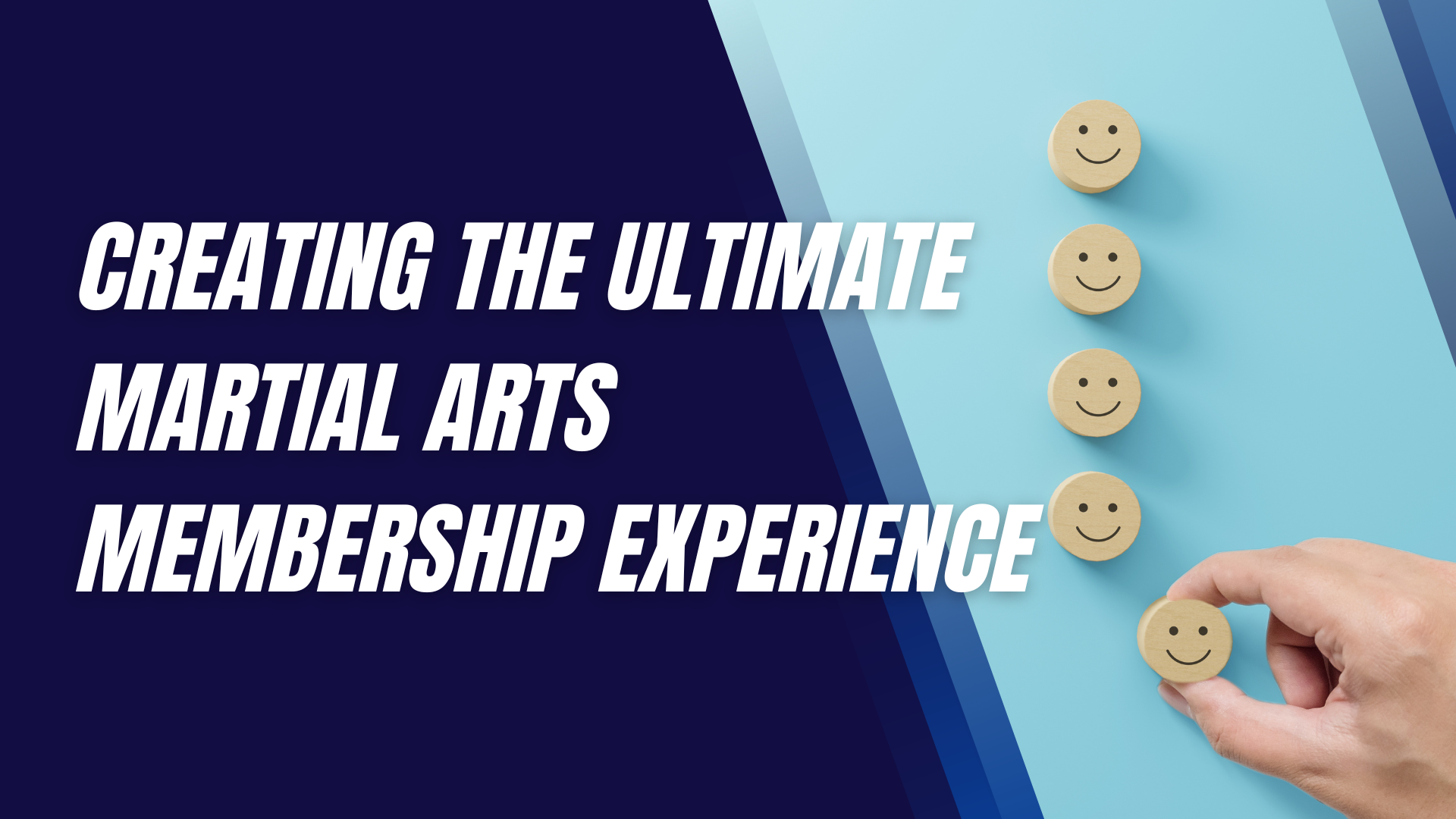The Importance of a Martial Arts Gym Mission Statement
In today's competitive world, a martial arts gym cannot rely solely on exceptional training or a stellar facility.
To thrive, it must clearly communicate its core values and goals to both its team and potential members. This is where a well-crafted mission statement becomes invaluable. A mission statement defines the gym’s purpose, its philosophy, and the principles it operates by, providing a sense of direction and unity. This article will explore the importance of a mission statement for a martial arts gym, covering how it shapes the gym’s identity, helps attract the right members, fosters community, and serves as a powerful branding tool.
Defining a Martial Arts Gym Mission Statement
A mission statement is a concise declaration of a gym’s core purpose and values. It’s not merely a slogan or a tagline; it’s a deeper expression of what the gym stands for. It typically includes:
- Purpose: Why the gym exists beyond financial gain. This could be to promote personal growth, self-defense, or to foster a supportive community.
- Values: The principles that guide the gym’s teaching, such as respect, discipline, perseverance, and honor.
- Vision: The long-term goals of the gym and the impact it aims to have on its members and the community.
By clearly articulating these elements, a martial arts gym can differentiate itself from competitors while providing a guiding framework for its operations.
Why a Mission Statement Matters for Martial Arts Gyms
A mission statement is not a mere formality but a crucial component of a gym’s foundation. Here’s why:
- Establishes Identity and Purpose
A mission statement solidifies the gym’s identity by clearly outlining its values and purpose. It helps both instructors and students understand the gym’s core philosophy, ensuring that everyone operates with the same understanding of what the gym is striving to achieve. - Guides Decision-Making
When faced with decisions about growth, class offerings, or even disciplinary actions, the mission statement serves as a touchstone. It helps gym leaders make decisions that align with their core values, keeping the gym on a consistent path. - Differentiation in the Market
With so many martial arts gyms available, a clear mission statement helps potential students understand what makes your gym unique. Whether it’s a focus on traditional martial arts, family-oriented training, or professional-level competition, a mission statement communicates what sets the gym apart.
The Role of a Mission Statement in Gym Culture
A mission statement plays a critical role in shaping the culture of a martial arts gym. It serves as a guide for behavior, interaction, and the overall atmosphere.
- Fostering Community and Values
A strong mission statement helps create a cohesive community. When everyone—trainers, staff, and students—knows and embraces the gym’s mission, it fosters a sense of belonging and shared purpose. For instance, if the mission emphasizes inclusivity, members will expect a welcoming and supportive environment. - Promoting Discipline and Focus in Training
Martial arts inherently promote discipline, focus, and personal growth. A mission statement that emphasizes these values will encourage students to take these principles seriously, both inside and outside the gym.
Aligning the Mission with Martial Arts Principles
Martial arts are steeped in tradition, with philosophies that transcend physical combat. Whether it’s honor, respect, or perseverance, these values are often central to a gym's mission statement.
- Honor, Respect, and Integrity
A mission statement that incorporates these principles reflects a commitment to teaching martial arts as more than just self-defense techniques but as a way of life. This can attract students who are looking for personal growth and character development as much as physical fitness. - How Martial Arts Philosophies Shape the Mission Statement
The philosophies behind martial arts, such as karate’s Bushido or Brazilian Jiu-Jitsu’s humility, can heavily influence a gym's mission. This alignment between ancient philosophies and the gym’s modern mission gives it depth and authenticity, which resonates with serious martial arts practitioners.
Attracting the Right Members Through Your Mission Statement
Your gym’s mission statement is also a powerful tool for attracting like-minded individuals. By clearly stating the values and goals of the gym, potential members can determine if the gym’s philosophy aligns with their personal goals.
- Communicating Values to Potential Members
When a mission statement highlights certain values—such as empowerment, discipline, or family focus—it speaks directly to individuals who are seeking those exact qualities in their martial arts training. - Filtering Ideal Students
A well-articulated mission can serve as a natural filter, attracting students who are serious about growth and community and repelling those who might not fit with the gym’s culture. This helps maintain a cohesive environment where everyone is working toward similar goals.
Building Trust and Loyalty with Members
Consistency between a gym’s mission and its day-to-day operations builds trust with members. If a gym’s mission is to create a supportive and inclusive environment, but members experience favoritism or cliquishness, trust is quickly eroded.
- Consistency Between Mission and Action
When the actions of the gym’s staff and trainers align with the mission statement, it reinforces the values that the gym stands for, making it easier for members to buy into the gym’s culture. - How a Mission Statement Builds Loyalty and Retention
Members who resonate with the gym’s mission are more likely to stay loyal. They’re not just paying for classes; they’re investing in a community that aligns with their personal values. Over time, this loyalty leads to better retention rates and a thriving gym community.
Mission Statement as a Branding Tool
In an industry as competitive as martial arts, branding is crucial for standing out, and the mission statement is a foundational aspect of that brand. It communicates not just what the gym does, but why it matters.
- How It Positions Your Gym in the Market
A mission statement helps define the gym’s unique value proposition (UVP). For example, a gym focused on self-defense for women will market itself differently than one that trains competitive fighters. The mission statement sets the tone for this branding. - Creating a Unique Value Proposition
The UVP derived from the mission statement helps prospective members understand exactly what they can expect. If the mission emphasizes holistic development, members know they’re joining a gym that goes beyond physical training to offer mental and emotional growth as well.
Differentiating Your Martial Arts Gym from Competitors
In many areas, martial arts gyms can seem interchangeable. However, a well-crafted mission statement can differentiate a gym by clearly defining its focus and goals.
- Using the Mission to Highlight What Sets Your Gym Apart
For example, a gym with a mission centered on traditional martial arts values may attract students interested in a deeper connection to martial arts history, while a gym focused on competition may appeal to those looking to achieve at a higher level.
Decision-Making Guided by the Mission Statement
A mission statement doesn't just inspire—it actively influences the daily and long-term decisions of a martial arts gym. From choosing the types of classes to offer to determining how to handle disputes, a clear mission statement ensures that all decisions reflect the gym's core values and principles.
- How a Mission Informs Growth Strategies
As a martial arts gym grows, it faces new challenges and opportunities. Should it expand into new locations, offer advanced training programs, or partner with schools for community outreach? A mission statement serves as a guide, ensuring that all strategic decisions align with the gym's foundational purpose. For example, if the mission emphasizes personalized attention and community, rapid expansion might contradict that focus, leading to a compromise in the quality of training or member experience. - Handling Challenges and Conflicts
Disagreements and challenges are inevitable in any organization. However, a mission statement provides a framework for resolving conflicts in a way that aligns with the gym’s values. For example, if the gym’s mission is to create a respectful and inclusive environment, this philosophy can be applied when handling conflicts between members or staff, ensuring that all parties are treated fairly and with dignity.
Training and Curriculum Development Based on the Mission
The mission statement not only influences business decisions but also shapes the gym's approach to training and curriculum development. A gym that prioritizes self-defense for real-world situations will have a different curriculum than one focused on competition or traditional martial arts.
- Developing Classes and Programs that Align with the Mission
For example, a martial arts gym with a mission centered on building life skills like confidence and discipline might offer specialized programs for children or teens, focusing on character development as much as martial techniques. In contrast, a gym focused on preparing students for competition may place a heavier emphasis on sparring, physical conditioning, and tactics for winning matches. The mission drives the creation of classes, ensuring that each program aligns with the gym’s broader objectives.
Long-Term Vision and Sustainability
A mission statement also plays a crucial role in shaping the long-term vision of a martial arts gym. It can help ensure that the gym remains relevant and sustainable as trends and member needs evolve.
- How a Mission Statement Supports the Gym’s Long-Term Goals
A mission statement is forward-thinking, reflecting not just what the gym stands for today, but what it hopes to achieve in the future. This could include growing a larger community, developing more skilled instructors, or even contributing to the broader martial arts world through competition or seminars. By clearly defining these aspirations, a gym can stay focused on its ultimate goals and measure progress over time. - Adaptability Over Time
While a mission statement should be clear and consistent, it must also be adaptable. As the martial arts landscape evolves—with new training methods, cultural shifts, or technological advancements—a gym may need to revisit its mission to ensure it remains relevant. However, the core values (such as respect, integrity, and discipline) often remain unchanged, serving as an anchor for any adaptations.
How to Craft an Effective Martial Arts Gym Mission Statement
Creating an impactful mission statement requires careful consideration of the gym’s purpose, values, and vision. A successful mission is clear, concise, and memorable, while also being broad enough to inspire long-term growth.
- Steps to Developing a Clear and Impactful Mission Statement
- Identify Core Values: What principles guide the gym’s approach to teaching and interacting with members? Is it community, personal development, discipline, or competition?
- Define Purpose: Why does the gym exist? What impact does it aim to have on its members and the broader community? This could be promoting self-defense, personal growth, or spreading the art of Brazilian Jiu-Jitsu or Muay Thai.
- Set a Vision: What are the gym’s long-term aspirations? This might include becoming a center for local martial arts culture or producing national-level competitors.
- Keep it Concise: The best mission statements are brief yet meaningful. They typically consist of one or two sentences that capture the essence of the gym.
- Get Feedback: Once drafted, involve staff and trusted members for feedback to ensure the mission resonates with everyone involved.
Involving Staff and Members in the Mission Statement Creation
The process of creating a mission statement shouldn’t be top-down; involving instructors, staff, and even members can lead to a mission that reflects the collective values of the entire gym community.
- Building Collective Buy-In
By including staff and members in the process of developing the mission statement, you create a sense of ownership and buy-in. This ensures that the entire team feels aligned with the gym’s goals and values, making it easier to live out the mission in their daily roles. - Creating a Shared Vision
When everyone in the gym, from the instructors to the students, is on the same page, it fosters a stronger community and a more unified effort toward achieving the gym's vision. This shared vision helps maintain consistency in how the gym operates, even as it grows or faces challenges.
Examples of Powerful Martial Arts Gym Mission Statements
Looking at examples from successful martial arts gyms can offer valuable insights into crafting an effective mission statement. These examples often reveal how gyms focus on different aspects of martial arts, from community building to high-level competition.
- Analysis of Real-World Examples
- Gracie Jiu-Jitsu Academy: “To empower individuals to defend themselves and realize their full potential through martial arts training in a safe and welcoming environment.”
This statement emphasizes empowerment, self-defense, and inclusivity, which are key components of Gracie’s philosophy. - Evolve MMA: “To unleash greatness in everyone through authentic martial arts and world-class coaching.”
Evolve MMA’s mission focuses on personal greatness and top-tier instruction, highlighting its commitment to high standards and individual achievement. - Karate Academy: “To instill discipline, respect, and confidence in our students while teaching the art and techniques of karate.”
This mission focuses on the traditional values of martial arts—discipline, respect, and confidence—which are critical in attracting students who are looking for personal growth alongside physical training.
- Lessons from Top Martial Arts Gyms
These examples show that a mission statement should focus on a gym's unique values, whether that’s community, personal development, or competitive excellence. The key is to remain authentic to the gym’s identity and purpose.
Updating and Evolving the Mission Statement
As a gym evolves, so too might its mission. Keeping the mission statement up to date ensures that it remains relevant and continues to inspire both members and staff.
- When to Review and Revise the Mission Statement
Periodically, gym owners and staff should assess whether the mission statement still accurately reflects the gym’s goals and values. Major changes, such as expansions, shifts in membership demographics, or new martial arts trends, may warrant a revision of the mission statement. This review process can be done every few years to ensure the mission remains fresh and motivating. - Staying Relevant in a Changing Environment
As martial arts evolve and new training philosophies or technologies emerge, it’s essential to ensure that the mission remains aligned with current practices while staying true to the gym’s foundational values. For example, incorporating aspects of mindfulness training or fitness technology into the gym might prompt an update to the mission to reflect these new focuses.
FAQs
Q1: What is the purpose of a mission statement for a martial arts gym?
A mission statement clearly defines the gym's values, goals, and purpose. It serves as a guide for decision-making, shapes the gym culture, and helps attract like-minded members.
Q2: How can a mission statement impact the success of a martial arts gym?
A mission statement can significantly influence a gym's success by providing clear direction, fostering community, improving member retention, and serving as a strong branding tool.
Q3: How often should a martial arts gym update its mission statement?
A gym should review its mission statement every few years or after significant changes such as expansion, new programs, or shifts in market trends to ensure it remains relevant and aligned with the gym's goals.
Q4: How does a mission statement attract the right members?
By clearly articulating the gym's values and purpose, a mission statement communicates to potential members what the gym stands for, helping attract those who align with its philosophy.
Q5: What makes a mission statement effective?
An effective mission statement is concise, authentic, and reflective of the gym's core values. It should be memorable and inspire both staff and members.
Q6: Can involving staff and members in creating the mission statement be beneficial?
Yes, involving staff and members in crafting the mission statement can foster collective buy-in and ensure that the mission reflects the shared values and vision of the entire gym community.
Final Thoughts
A mission statement is far more than a simple statement of intent; it is the guiding force behind the success and identity of a martial arts gym. By clearly articulating the gym’s purpose, values, and long-term goals, it fosters a strong sense of community, guides decision-making, and serves as a powerful branding tool. It helps to attract the right members, retain loyal students, and ensure that the gym remains focused on its core objectives, even as it grows and evolves.
For martial arts gyms, where the principles of discipline, respect, and perseverance are essential, a well-crafted mission statement becomes an embodiment of those values. It aligns the actions of instructors, staff, and students with a shared vision, creating a cohesive environment that supports both individual growth and collective achievement. Whether a gym is focused on traditional martial arts, self-defense, or competitive excellence, the mission statement is a key factor in ensuring long-term sustainability and success.
By regularly reviewing and updating the mission, martial arts gyms can adapt to new challenges and opportunities while staying true to their core values. Ultimately, a strong mission statement lays the foundation for building a thriving, focused, and values-driven martial arts community.
Interested in trying a martial arts class? Find an affiliated academy anywhere in the country by clicking here.
Have your own martial arts program? Get to know more about what we have to offer at Ground Standard Agency for helping martial arts businesses grow.
Email us at info@groundstandard.com, or call and text us at (732) 907-8920 today to learn how to start growing your own academy, school, dojo, or gym with us as well.
Share this article












